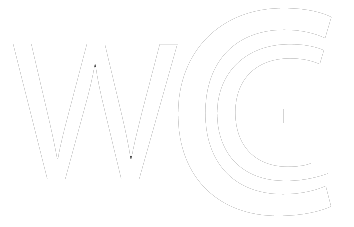Zero-Knowledge Virtual Machines: The Traditional, the Modular, the Real, and the Fake

Zero-knowledge proofs emerged as a protocol with two parties, the prover and the verifier. The prover can convince the verifier that specific information is accurate without actually conveying the information. Anyone can prove they have information by revealing it; the challenge lies in proving possession without revealing a single detail.
One can generate proof of a statement only if they have specific confidential information linked to the statement. The verifier should not be able to prove the statement to third parties even after understanding that the statement is true.
It's surprising to learn that the concept of zero-knowledge proofs emerged almost 40 years ago. It was first explored in a paper written by Silvio Micali, Shafi Goldwasser, and Charles Rackoff and published in 1989.
The paper presented the hierarchy of interactive proof systems and introduced the concept of knowledge complexity, which measures the knowledge of the proof transferred by the prover to the verifier.
How zk-virtual machines incorporate proofs
A zero-knowledge virtual machine (zkVM) incorporates zk-proofs by integrating cryptographic processes, thus ensuring security and privacy. Traditionally, zkVMs are designed as monolithic systems, meaning the entire zkVM is tightly integrated into a single structure. These systems inevitably include optimization trade-offs. Because everything is integrated, optimizations for specific use cases require some changes to the entire zkVM structure. Worryingly, security improvements also require changes.
Various components, such as proof generation, state transitions, and execution logic, are tightly coupled and interdependent. Regarding execution, the virtual machine processes all computations within one architecture. These range from smart contract execution to proof verification.
Addressing the challenges of speed and flexibility
Like many advanced technologies, zkVMs remain at the heart of innovation in blockchain and cryptography. However, developers face challenges involving speed and flexibility. In a zkVM, speed refers to the speed at which the system generates and verifies zero-knowledge proofs. Speed is of paramount importance in a distributed and decentralized environment because it guarantees that transactions are processed in real- or almost real-time while the system remains usable.
Zero-knowledge proofs are computationally intensive by their mathematical and cryptographic nature, and speeding up these processes without compromising integrity and security is difficult. However, there are strategies to boost speed, such as using specialized hardware (ASICs, GPUs) and optimizing algorithm implementations. Modular zkVMs like Pico v1.0, recently introduced by Brevis, are improving upon traditional zkVM's uniform approach. Pico is developing zkVMs modularly, which entails a customizable structure that has achieved the fastest CPU performance worldwide (70%-155% better than the second-fastest solution). GPU acceleration will be launched in future updates to Pico.
Its modular architecture combines high-performance specialized circuits with a general-purpose zkVM, enabling flexible proving fields, workflow, and systems. While traditional zkVMs rely on low-level, pre-written operations and functions (precompiles), Pico's circuits can meet diverse application needs. Developers can use custom implementations or integrated options to adapt custom circuits as precompiles or coprocessors. That design reduces proof generation time significantly.
Modular machines are more flexible due to independent components
Traditional zkVMs are less flexible when it comes to scaling and customization, as the system is built for a specific use case, often targeting a concrete set of applications or smart contract languages. Modular zkVMs break down the zkVM into discrete, independent components or modules. This modular approach allows more flexibility because you can swap out different modules based on specific needs or use cases. Developers can choose the best cryptographic methods or proof systems for their application.
In a modular zkVM, different components (proof generation, verification) are decoupled and can be updated or replaced independently. This allows developers to focus on optimizing or upgrading specific system components. They can enhance modules separately to meet growing needs without affecting the entire zkVM.
Modular zkVMs are designed with interoperability in mind, making it easier for different systems and blockchain networks to integrate. This is especially useful in multi-chain environments.
Users can compose and connect different virtual machines more easily, enabling complex dApps that can leverage multiple machines or zk-proof systems simultaneously.
Resource usage is also a factor in the technology's scalability and sustainability. Developers can improve efficiency by optimizing algorithms and implementing data compression, which limits the data volume to be processed and transmitted.
Authentic zkVMs focus on privacy
It's also important to remember that not all projects claiming to be zkVMs actually are. Let's look at two protocols: Aleo and Ola. Aleo focuses on building private, scalable dApps. Its instructions are compiled into bytecode that is then executed on its zkVM.
Aleo's use of zk-SNARK proofs guarantees full privacy. Although specific performance benchmarks were not widely available as of last year, the platform ensures scalability via efficient proof systems.
Aleo integrates with other zkVM-based protocols and is built for privacy-first dApps. It qualifies as a zkVM, providing private dApps with a comprehensive solution.
Ola is designed to generate validity proofs for computations and execute them off-chain securely. The protocol was built to achieve high transaction throughput. It's interoperable with a number of L1 blockchains and supports a hybrid zk-rollup design. However, true zkVMs prioritize privacy differently. Ola focuses on proving the correctness of computations and transactions, not on ensuring data privacy. Due to this, Ola is not a zkVM. Rather, it's a zk-rollup platform that aims to reduce transaction fees and improve throughput on L1 blockchains.
Disclaimer: This article is provided for informational purposes only. It is not offered or intended to be used as legal, tax, investment, financial, or other advice.
Text source: Crypto Daily™










